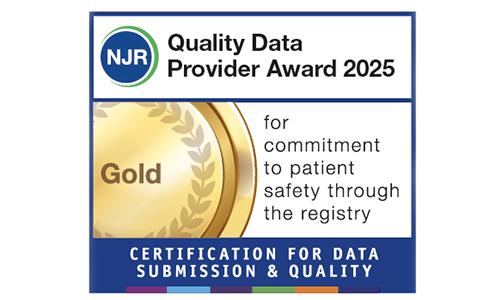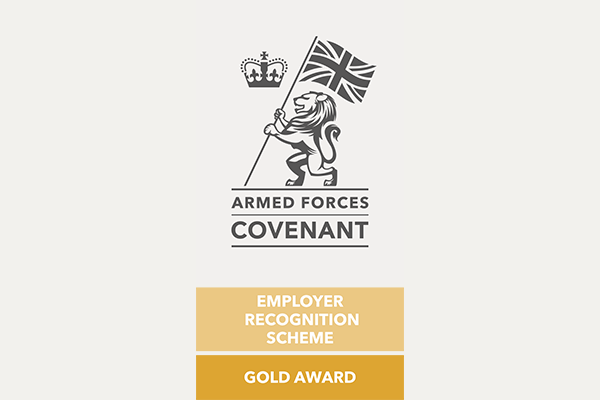Heel pain is one of the most common foot complaints among adults, often affecting mobility, exercise routines, and overall quality of life. Whether it’s a sharp morning ache or persistent pain in heel of foot after activity, heel pain can stem from a range of causes. These include plantar fasciitis, heel spurs, Achilles tendon issues, overuse, and injury. Left untreated, it can interfere with work, walking, and even rest. This makes it important to arrange early diagnosis and tailored care.
This page offers clear, practical guidance to help you manage heel pain and explore options like medications, physiotherapy, and surgery. Ramsay Health Care’s expert teams provide tailored care for lasting relief.
Learn more about our pain management treatments available for heel pain.
What is heel pain?
Heel pain is a common condition that can range from a sharp, stabbing sensation to a dull ache or burning discomfort. It may feel worse first thing in the morning, after long periods of standing, or following physical activity. For some, the pain is intermittent and manageable; for others, it can be persistent and debilitating.
Pain typically occurs in one of two areas:
- Bottom of the heel pain (plantar region) - often linked to plantar fasciitis, this pain may feel like a bruise or tight pull under the foot.
- Pain in back of heel (Achilles region) - commonly associated with Achilles tendonitis or irritation, this pain may worsen with walking, running, or climbing stairs.
Understanding where and how your pain in heel presents is the first step toward identifying its cause. From overuse injuries and inflammation to structural issues like heel spurs or tendon strain, the underlying reasons vary. Recognising symptoms early and exploring heel pain treatment options can help prevent long-term damage and restore comfort.
What causes heel pain?
Heel pain causes can arise from a variety of conditions, each with distinct symptoms and triggers. Understanding the reason for heel pain caused by the underlying issues is key to finding the right treatment and preventing long-term discomfort. So, what causes heel pain?
Below, are the most common heel pain reasons:
- Plantar fasciitis - the leading pain in heels reason. This condition involves inflammation of the plantar fascia - a thick band of tissue running along the base of your foot to your heel. It typically causes sharp pain near the heel, especially in the morning or after rest. Learn more about plantar fasciitis.
- Heel spurs - these are bony growths that develop on the underside of your heel bone. They are often linked to long-term strain or plantar fasciitis. While not always painful, they can contribute to pain on your bottom heel during walking or standing.
- Achilles tendonitis - pain in back of heel may be due to inflammation of your Achilles tendon. This condition is common in runners and active individuals and may worsen with activity or tight calf muscles.
- Overuse and strain - repetitive stress from walking, running, or standing for long periods can lead to microtears and inflammation in heel structures, especially without proper footwear or rest.
- Injury or trauma - a sudden impact, fall, or twist can damage heel tissues, bones, or tendons - leading to acute pain, swelling, or bruising.
- Other causes - less common pain in heel reasons include arthritis, nerve compression, bursitis, or structural foot issues such as flat feet or high arches.
Identifying the specific heel pain causes helps guide effective treatment. If you're experiencing persistent discomfort or sudden heel pain without injury, a professional diagnosis can help you take the next step toward recovery.
Symptoms of heel pain
Heel pain can present in different ways depending on the underlying cause. Common symptoms include:
- Sharp pain with first steps in the morning - a hallmark of plantar fasciitis, this discomfort often eases as you move but may return after rest.
- Swelling, redness, or warmth - these signs may indicate inflammation or injury around the heel.
- Pain in heel of foot when walking - or heel pain after running, jogging, or prolonged standing can feel worse, especially if caused by overuse or tendon strain.
- Stiffness in your heel or foot arch - you may notice reduced flexibility or tightness, particularly after periods of inactivity.
- Fatigue or difficulty walking - persistent pain in heel can lead to altered gait, reduced mobility, and general foot fatigue.
Recognising these symptoms early can help guide diagnosis and treatment - preventing further strain and supporting your recovery.
Heel pain treatment
If you're searching for heel pain treatment, heel pain remedies, or a cure for painful heels, it's important to understand that while fast relief is possible in some cases, long-term recovery often requires a combination of approaches. So, how to reduce heel pain? And how to get rid of heel pain fast? The answers depend on the cause, severity, and duration of your symptoms.
Explore our guide on how to deal with foot and ankle pain. Below are proven strategies to help manage heel pain and support healing.
Lifestyle adjustments
Simple changes can make a big difference in heel pain relief:
- Footwear - avoid ill-fitting or uncomfortable shoes. Choose footwear with good heel cushioning, effective arch support, and a slight heel raise (6 - 10 mm higher than normal) to reduce strain.
- Weight management - if you are overweight, losing weight can significantly reduce pressure on your heels and improve recovery.
- Activity modification - minimise walking or exercising on hard ground. Rest regularly and avoid walking or running too fast to prevent overuse and allow healing.
Hot and cold therapy
Alternating between hot and cold therapy can help manage heel pain effectively:
- Ice therapy is ideal for reducing inflammation, especially after activity. Apply a cold pack to your heel for 15 to 20 minutes to ease swelling and numb discomfort.
- Heat therapy helps relax tight muscles and improve circulation. Use a warm compress or soak to relieve stiffness and tension in your foot and calf.
These simple remedies can complement other treatments and support recovery when used consistently.
Physiotherapy and stretching exercises
Physiotherapy plays a vital role in heel pain management by improving flexibility, strength, and overall foot function. A tailored exercise program may include:
- Stretching exercises to ease tension in your plantar fascia and Achilles tendon
- Strengthening routines to support foot and ankle stability
- Mobilisation techniques to improve movement and reduce stiffness
- Foot and calf exercises to reduce strain and prevent recurrence.
These exercises not only relieve pain but also support long-term recovery. For personalised guidance, explore our physiotherapy resources for foot care and rehabilitation.
Pain relief medications
For many people, heel pain relief begins with simple, accessible treatments. Over-the-counter non-steroidal anti-inflammatory drugs (NSAIDs) such as ibuprofen can help reduce inflammation and ease discomfort. Topical gels and creams may also provide targeted relief when applied directly to the painful area.
If pain persists or worsens, it’s important to speak with your GP or specialist. They can assess whether stronger medications or alternative therapies are appropriate for your condition and overall health.
Supportive devices
Supportive devices can play a key role in easing heel pain and promoting recovery, especially when used alongside physiotherapy and lifestyle changes. Common options include:
- Orthotics - custom or over-the-counter insoles that provide arch support, improve foot alignment, and reduce strain on the heel. They’re especially helpful for conditions like plantar fasciitis or flat feet.
- Heel cushions - soft pads placed inside shoes to absorb shock and reduce pressure on the heel. These are ideal for everyday comfort and can help relieve pain during walking or standing.
- Night splints - worn while sleeping, these devices gently stretch your plantar fascia and Achilles tendon, helping to reduce morning pain and stiffness.
These aids are simple, non-invasive, and often effective in managing symptoms. A podiatrist or physiotherapist can help you choose the right device based on your specific needs and diagnosis.
Injections
Injections may be recommended when heel pain persists despite rest, physiotherapy, and other conservative treatments. They’re typically used for conditions like chronic plantar fasciitis or severe inflammation that hasn’t responded to medication or supportive devices.
- Corticosteroid injections can provide targeted relief by reducing inflammation around your heel.
- Platelet-Rich Plasma (PRP) injections use components from your own blood to promote healing in damaged tissues.
These options are usually considered after other remedies have been tried and should be discussed with a specialist to determine suitability and timing.
Surgery
Surgery is typically considered when heel pain remains chronic and unresponsive to conservative treatments like physiotherapy, orthotics, or injections. It may be recommended for:
- Chronic plantar fasciitis - a procedure called plantar fascia release involves relieving tension in the fascia to reduce pain and improve mobility.
- Severe heel spurs - in some cases, surgical removal of the bony growth may be necessary if it continues to cause discomfort despite other therapies.
These options are tailored to individual needs and are usually reserved for persistent cases affecting quality of life. To explore surgical treatments we offer for foot and ankle conditions click here.
Heel pain diagnosis
Diagnosing heel pain begins with a physical examination and a detailed patient history, where your clinician will assess the location, type, and timing of your pain, as well as any contributing factors like footwear, activity levels, or previous injuries.
To confirm the cause and rule out other conditions, imaging tests may be recommended:
- X-rays can detect bony abnormalities such as heel spurs or fractures.
- Ultrasound or MRI scans are used to evaluate soft tissue structures, including the plantar fascia and Achilles tendon, especially in cases of suspected inflammation or tearing.
These diagnostic tools help tailor your treatment plan. For more on diagnostic options available at Ramsay Health Care, visit our page on tests and scans.
When to see a doctor for heel pain
While mild heel pain often improves with rest and home care, certain symptoms may signal the need for medical attention. You should see a doctor if you experience:
- Severe or persistent pain that doesn’t improve with rest or self-care
- Swelling, redness, warmth, or sudden bruising around your heel
- Difficulty walking or bearing weight on your affected foot
- Pain following trauma, a fall, or suspected fracture.
Early diagnosis can prevent complications and guide appropriate treatment, especially if your pain is interfering with your daily life or worsening over time.
Heel pain support at Ramsay
Effective heel pain management starts with expert care. At Ramsay Health Care, our dedicated teams of orthopaedic consultants, podiatrists, and physiotherapists work together to diagnose and treat a wide range of heel conditions - from plantar fasciitis to chronic tendon issues.
Whether your pain is persistent, worsening, or interfering with daily life, we’re here to help. Our specialists offer personalised treatment plans tailored to your needs, combining clinical expertise with compassionate support.
If heel pain is affecting your mobility or comfort, don’t wait – contact us or book a consultation and take the first step toward lasting relief.
Heel pain FAQs


